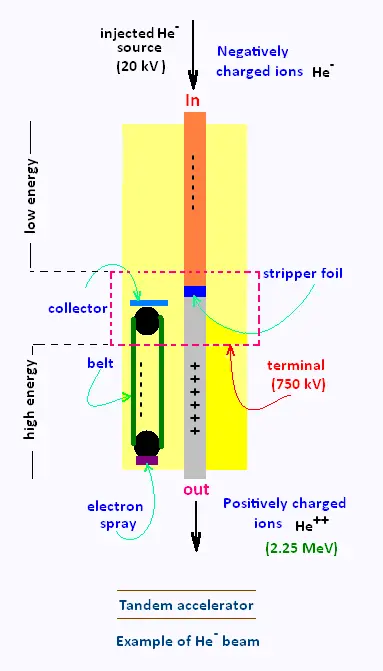Nuclear Physics
The nucleus
Radioactivity
Applications
Particle accelerators
© The scientific sentence. 2010
|
Nuclear Physics &
Particle Physics
Particle accelerators
Electrostatic Accelerators
Tandem accelerator
Tandem accelerator

The Tandem accelerator is a particle accelerator such as "Van de Graaf".
The first was built in the 1950s. This machine
can use a very large high voltage, about 15 millions volts, to accelerate negative ions
provided by the injector.
In the terminal, a system for stripper , or peeler, transforms the negative ions into
positive ions, so that they are accelerated again in the high-energy part of the machine.
A Tandem Van de Graaff accelerator can produce accelerating potentials twice as high as
that from a single Van de Graaff accelerator. Negative ions are produced which are
then accelerated to a certain electrode which froms part of a Van de Graaff machine.
The ions are then stripped of two of their electrons and emerge as positive ions,
accelerating away from the central electrode towards the target.
The ions thus gain kinetic energy twice, once as negative ions and then as positive
ions in a tandem fashion. Accelerators of this kind are able to accelerate protons
to energies in excess of 40 MeV.
|
|